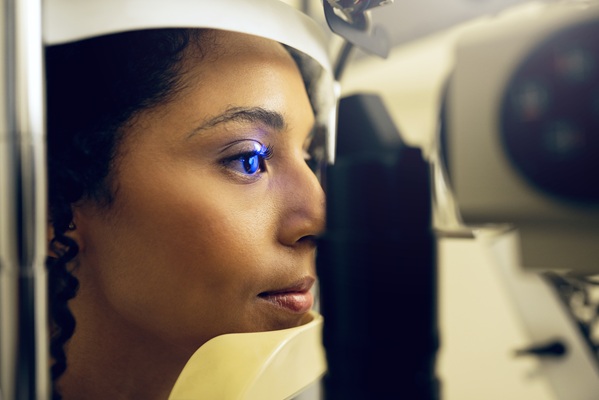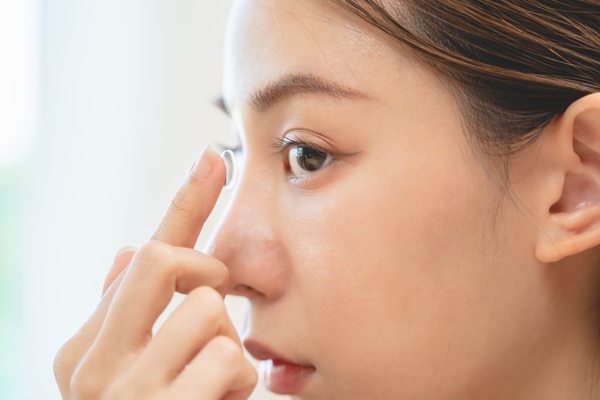How an Optometrist Diagnoses and Treats Macular Degeneration

Are you wondering if you should see an optometrist to diagnose your current eye problems? Optometrists are eye care professionals who can diagnose eye disorders and eye diseases. When it comes to treating any eye problems that may be found, optometrists can provide their patients with a proper diagnosis and explain the treatment options available to ensure that their eyes can once again be in optimal health.
What is macular degeneration?
This common eye disorder is caused when the center portion of the retina begins to deteriorate. It is more commonly found in those who are 50 years of age and older. A common sign associated with this disease is a loss of central vision, which slowly makes it difficult for those diagnosed to have clear vision.
According to the American Macular Degeneration Foundation, macular degeneration is the leading cause of vision loss, affecting more than 10 million Americans. This is more than cataracts and glaucoma combined.
How optometrists diagnose macular degeneration
Optometrists can diagnose macular degeneration in their patients by performing an eye exam. The patient will first receive eye drops, as this enables the optometrist to view the inside of the eye. This is important because this eye disease directly affects the retina, which can only be seen using a special lens. Patients may also be asked to look at a grid, which helps the optometrist determine whether the patient is experiencing any blurry vision or blank spots. Patients may see the grid as blurry or disproportionate. Other diagnostic approaches include the following.
Ophthalmoscopy: Ophthalmoscopes are instruments used to see the insides of the eye, including the retina. An eye examination is performed through a central hole and a mirror that reflects light into the eye. The eye doctor will be able to examine the retina and macula to identify any changes or injuries.
Fluorescein angiography: Medical professionals will inject a specific dye into the bloodstream and take pictures of the dye’s circulation inside the eyes. If luminous spots form, the medical professionals may suspect blood vessel leakage in the retina.
Optical coherence tomography: Optometrists and ophthalmologists may take pictures of the back of the eye using optical coherence tomography (OCT). This test covers all parts of the eye, from the macula and the optic nerve to the retina and choroid. The OCT can reveal the areas of the retina that are becoming thinner, indicating the presence of geographic atrophy. The OCT exam provides the most precise visualization of retinal changes to date.
Tonometry: Tonometry is a procedure that evaluates intraocular eye pressure. Damage to the retinal nerve fibers caused by elevated intraocular pressure can sometimes cause blindness. Although testing for elevated eye pressure is not directly connected to macular degeneration, it is done to rule out other disorders, including glaucoma. This is crucial to pinpoint whether macular degeneration is the root cause of visual loss.
How an optometrist diagnoses and treats macular degeneration
There are two different types of macular degeneration: wet and dry. It will depend on whether the patient is diagnosed with wet macular degeneration or dry macular degeneration when it comes to how an optometrist will treat the disease.
Wet macular degeneration is often treated by informing the patient of dietary changes that they need to make in order to slow down the progression of the disease. It is also necessary for certain patients to take nutritional supplements. Patients are also encouraged to exercise on a regular basis and avoid smoking.
An optometrist can treat dry macular degeneration if the disease is still in its earliest stages. Treatment for this particular type of macular degeneration includes undergoing laser treatment and having certain eye medications injected into the area, which slows down the progression of the disease. The goal for those diagnosed with this type of macular degeneration is to prevent the disease from progressing.
Are you in need of an eye exam?
Would you like to make an appointment with our optometrist today? The only way that you can understand the current state of your eye health is to have your eyes examined by an experienced eye doctor. If any eye problems are found, you will be informed of the next steps, which will be included in your eye care treatment plan. If you are currently experiencing any eye problems, please let us know when you call us to schedule your appointment. We would also be happy to answer any questions that you have.
Request an appointment here: https://www.texasoptical.net or call Texas Optical at (214) 771-7333 for an appointment in our Dallas office.
Check out what others are saying about our services on Yelp: Optometrist in Dallas, TX.
Recent Posts
For those living with diabetes, undergoing a diabetic eye exam is one of the most important steps in protecting their vision and overall eye health. High blood sugar levels can lead to a range of complications, including conditions that damage the eyes over time. These exams help detect these issues before they become serious, allowing…
Contact lenses provide clear vision and convenience for individuals who prefer an alternative to eyeglasses. However, proper care and maintenance are essential to prevent infections, irritation, and eye damage. Neglecting hygiene practices can lead to serious eye conditions, including corneal ulcers and keratitis. Understanding how to clean, store, and handle contact lenses ensures long-term eye…
Maintaining eye health and preventing long-term issues is the result of consistent and quality vision care. Many people focus on overall wellness but may overlook daily habits that support healthy eyesight. However, taking simple steps each day can protect vision, reduce eye strain, and prevent future complications. By making eye health a priority, it is…
Prescription contacts provide vision correction, comfort, and convenience for those who do not want to wear glasses. However, caring for and wearing contacts takes some getting used to. Learning to insert, remove, and maintain them will help ensure a comfortable and safe experience.Not all contact lenses are the same, and choosing the right pair is…


